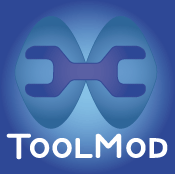

 ToolMod Pro Audio ToolMod Pro AudioM/S Stereo EQ TM134 Special M/S Equalizer with 4 fully parametric Bands and Matrix Stages at Input and Output The TM134 provides an easy way to accomplish frequency dependent manipulation of the stereo image. The integrated L/R to M/S matrix at the input and the M/S to L/R matrix to reconvert the processed signal into the common left-right stereo format make it possible to use the M/S EQ with standard stereo signal as well as part of an M/S stereo processing chain. Each of the 4 fully parametric bands can be used either in the S channel, the M channel, or in both channels with reversed direction of the boost/cut controls. |
Highlights:
all M/S Modules:
Alternatives:
|
|
At a glance, the TM134 looks like a fully parametric 4-Band EQ;
however, this module has an entirely different purpose. Using equalization not
in the standard left-right stereo format but in the M/S format, offers a sophisticated
way to modify the stereo image. While a unit like the M/S
direction mixer TM130 can reduce or enhance the stereo base width over
the entire audio frequency band, the M/S EQ makes it possible to apply stereo
base enhancement or reduction in the frequency bands that are defined by the
center frequency and q-factor controls. Here is some basic information on equalizers
in the M/S format.
M/S Matrix Frequency dependent Stereo Base Width Control EQ Bands Sweep Ranges & Q-Factor The headroom is + 30 dBu throughout the entire M/S EQ. At linear settings, the output noise is less than -94 dBA/-90 dBuRMS with M/S input and output, which results in a total dynamic range of at least 124 dBA / 120 dBRMS. The TM134 is a 4U ToolMod that fits into two slots of the horizontal 1U high ToolMod Frames. The vertical version fits into a slot of a 4U high ToolMod Frame. |
|
| SURROUND SOUND |
| MIXING CONSOLES |
| Newsletter |
| Where to buy | |||
| Support | |||
| Download | |||
| Tell A Friend | |||
Imprint
|
Although the TM134 M/S-EQ can be used stand-alone with excellent results, the TM130 M/S Direction Mixer with elliptical EQ is the ideal addition to the equalizer. The elliptical equalizer in the matrix maintains a stable, centered bass range while the base enhancement takes place with the M/S EQ. In most cases the frequency independent base width setting of the direction mixer can be used to reduce the overall width afert applying the enhancement in certain frequency bands with the TM134. This method can reduce mono compatibility issues that are always side effects of base enhancement effectively.
transformer Mic Pre TM102
discrete Mic Pre TM103
active DI Amp TM105
5-Band Equalizer TM107
3-Band Equalizer TM112
Compressor TM112b
VCA Compressor TM115
Brickwall Limiter TM115b
Peak Limiter TM116
Noise Gate TM130
M/S Direction Mixer TM131
L/R-M/S Matrix TM132
M/S Compressor TM133
M/S Mastering EQ TM134
4-Band M/S EQ TM204
4-Band Mastering EQ TM205
5-Band Stereo EQ TM212
Stereo Compressor TM212b
Stereo VCA Compressor TM215
Stereo Limiter TM215b
Mastering Limiter TM222
Mastering Compressor
ToolMod Sitemap

